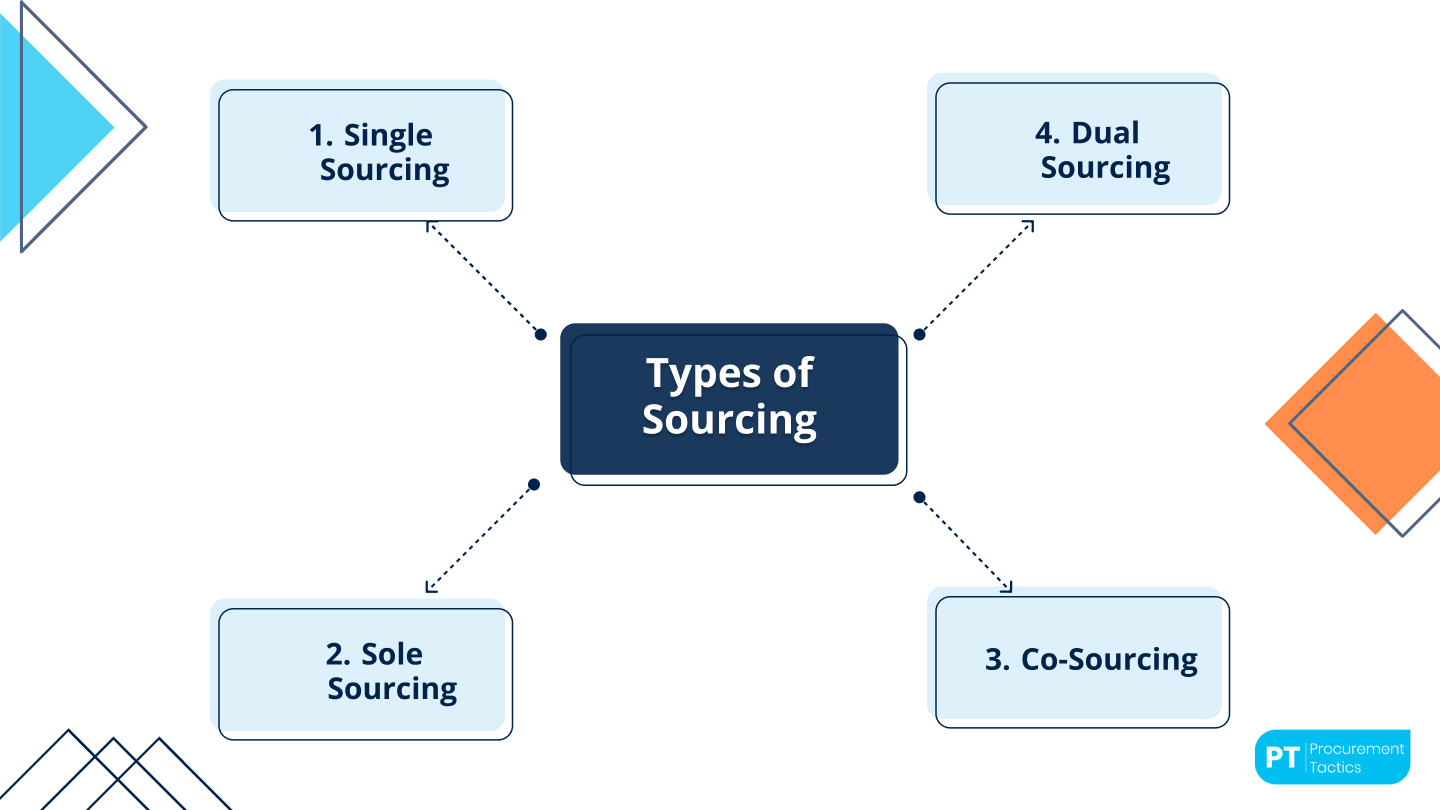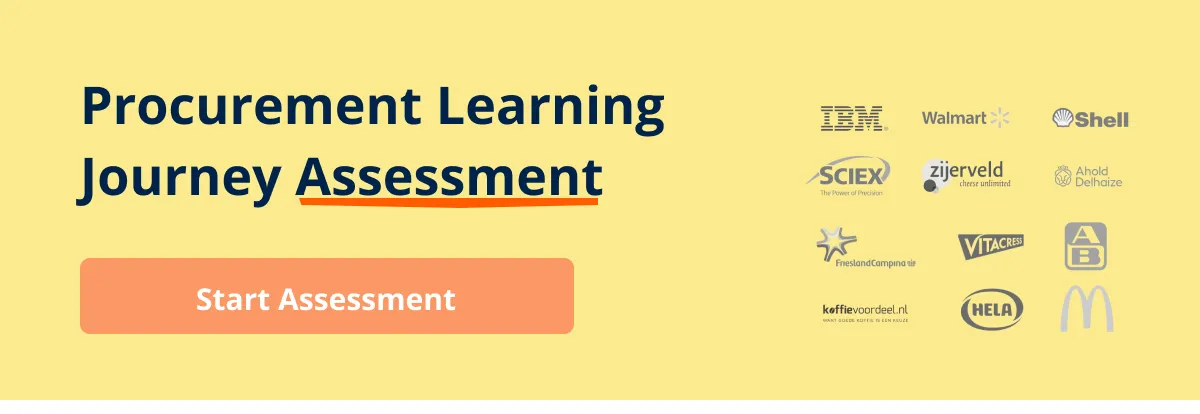ChatGPT & AI in
Procurement Course
Free Preview Lesson

Written by Marijn Overvest | Reviewed by Sjoed Goedhart | Fact Checked by Ruud Emonds | Our editorial policy
Sourcing Process — The Ultimate Guide of 2024
Key take-aways
- The sourcing process involves the assessment, selection, and management of suppliers to acquire the needed materials or services.
- Sourcing process ensures companies get things they need at the best price, save money, and make good connections with suppliers.
- The sourcing process is crucial for businesses in today’s competitive market as it helps control costs, improve efficiency, manage risks, and achieve strategic goals.
The sourcing process is a word where we can associate how sourcing works. We are all familiar with sourcing but many are confused about its processes.
For this article, we will explore what the sourcing process is. We will check how it affects the entire procurement process of an organization.
Reading this article will give you a new perspective on sourcing and its processes. This will allow you to use it effectively in your work or your business. So without further ado, let us check the sourcing process.
I have created a free-to-download editable procurement process: 7 steps template. It’s a PowerPoint file, together with an Excel file, that can help you streamline your sourcing process. I even created a video where I’ll explain how you can use this template.
What is Sourcing?
Sourcing, as we know, is the search for a supplier or service provider to get the materials or services. It finds a supplier or a service provider for the business to operate. We can regard sourcing as the beginning of the supply chain.
Sourcing does not just mean finding materials because it needs to follow the requirements of the company. Once they try sourcing substandard materials, the productivity of the company will be affected resulting in losses

The Steps in the Sourcing Process
Here are the usual steps that procurement professionals do in the sourcing process:
1. Assess the needs of the company
Before the sourcing team acquires the materials, it must first assess the needs of each department in the company. This sourcing process also defines the specifications of the needed materials or services.
The company will analyze if the materials are really needed or an unnecessary cost to the company. Assessing the needs will allow the company to avoid buying duplicate materials.
2. Research the market
After analyzing, the sourcing team will now search for potential suppliers or service providers. This sourcing process allows the company to find suppliers that they can choose in the selection process.
Researching the market includes reviewing market offers and evaluating the market conditions. It also breaks down the cost of components of the product along with the other costs.
3. Develop a sourcing strategy
The third step in the sourcing process is to select the right sourcing strategy. The business will decide where to buy the needed goods or services to minimize costs and stabilize the supply chain.
In this sourcing process, a company will set criteria before choosing potential suppliers or service providers
4. Issue RFQ or RFP
In this step, the business will invite vendors to compete in the bidding process. The sourcing team will evaluate them based on their proposals.
The organization can request a quotation or proposal to evaluate each bid of the vendors. Both documents highlight the capability of each vendor.
Commonly, a request for a proposal is more complex than a request for quotation. It includes project details, pricing analysis, and delivery terms.
5. Selecting a supplier
Once the company receives the proposal or quotation, the selection process begins. The documents will be evaluated based on who matches the requirements best.
At the end of the selection process, the company will invite its selected vendor for negotiation.
6. Negotiation
In this sourcing process, the company will negotiate the terms with their selected vendor. They will discuss the terms and if both of them agree, they will now sign a contract.
The contract proves that both parties agreed to bind themselves to one another. This sourcing process limits procurement fraud as it obliges both parties to do their obligations.
7. Analyze the result
The final step of the sourcing process is to analyze the result. The sourcing team will analyze the status of the spend category. Additionally, it will check the performance of the supplier based on the materials or services it rendered.

Types of Sourcing
The following are the common types of sourcing in procurement:
1. Single Sourcing
Single sourcing is a process where there is more than one supplier who provides the same products or services that you need. The company only selects one among the other suppliers invited to bid.
2. Sole Sourcing
Sole sourcing refers to a situation where there is only one supplier that can provide your specific needs. These are unique products as there is no other supplier who provides these kinds of materials or services.
Commonly, these are suppliers who manufacture specialized parts or the only ones left selling the materials or services.
3. Co-Sourcing
Co-sourcing is a partnership between a client and a supplier or service provider. A business will select a vendor to work alongside its team to construct the materials or projects.
In simple terms, the internal staff of the company will work together with an external organization to do a certain task.
4. Dual Sourcing
Dual Sourcing is the process where a company uses two different suppliers for a specific material or service. In other words, the company will operate with two different suppliers for the same product or service.
Difference Between Sourcing and Procurement
Aside from procurement being the actual process, it has many differences from sourcing. The following are the differences between sourcing and procurement.
Procurement Expert’s Advice on Sourcing Process
For this article, we asked an experienced procurement expert to share her insights to help answer common questions about the sourcing process.
Nesrin Chabbah
Senior Lead Buyer
LinkedIn Profile: linkedin.com/in/nesrin-chabbeh
1. What do most people get wrong about the sourcing process?
“Many people mistake sourcing for just finding suppliers, overlooking its comprehensive processes. Sourcing is about finding suitable suppliers or service providers and adhering to specific company needs. It’s the starting point of the supply chain, crucial for productivity and cost-effectiveness. Procurement, distinct from sourcing, is about acquiring goods and services and optimizing the existing supply chain.”
2. What Should People know about the sourcing process if they are planning to start working on this?
“For those starting, understand sourcing is more than supplier hunting—it’s about building relationships, securing quality, and aligning with organizational needs. Procurement isn’t just acquisition; it’s optimizing the supply chain. Balance supplier-centric sourcing and acquisition-focused procurement for success, prioritizing quality and organizational alignment.”
3. From your experience, what is the most important thing you learned about the sourcing process?
“It is aligning sourcing with organizational needs, ensuring quality, and forging strong supplier relationships. In procurement, strategic supply chain optimization is paramount. Balancing “who” in sourcing and “what” in procurement optimizes the overall process. Integration and alignment yield the best outcomes.”
4. What tips can you give them about the sourcing process?
“Understanding your organization’s needs is paramount. Data-driven decisions, supplier collaboration, and compliance adherence are crucial. Continuously seek cost efficiency and embrace technology for optimization. Prioritize risk management and skill development for your team. Integrate sustainability for a responsible approach. A well-rounded strategy ensures success and adaptability in a dynamic business landscape.”
5. Can you give us examples and tips on how to streamline the sourcing process?
“To streamline the sourcing process effectively, start by centralizing all supplier-related information in one accessible system. Automate routine tasks like RFIs and RFPs for efficiency. Develop clear criteria for supplier selection and leverage e-sourcing platforms for negotiations. Implement supplier scorecards to monitor performance and negotiate smartly for favorable terms. Stay updated on market trends and ensure legal compliance in all contracts. Regularly review and adapt your sourcing strategies for continuous improvement, fostering better efficiency and outcomes.”
Conclusion
Understanding the sourcing process is crucial for any organization looking to efficiently acquire materials and services while maintaining a competitive edge.
The sourcing process comprises seven essential steps: assessing the company’s requirements, researching the market, creating a sourcing strategy, issuing an RFQ or RFP, choosing a supplier, negotiating terms, and analyzing the outcomes. These steps are meticulously planned to simplify the procurement process, cut down expenses, and improve the organization’s agility to respond to market fluctuations.
In today’s competitive business landscape, effective sourcing can be a game-changer. It not only ensures the availability of quality materials and services but also contributes to maintaining a strong supply chain and building relationships with suppliers.
By mastering the sourcing process, organizations can secure a solid foundation for their procurement activities and drive long-term success.
Frequentlyasked questions
What is the sourcing process?
The sourcing process involves the assessment, selection, and management of suppliers to acquire the needed materials or services.
What are the types of sourcing?
The types of sourcing are dual sourcing, sole sourcing, single sourcing, co-sourcing, and multi-sourcing.
What is the difference between sourcing and procurement?
Sourcing is involved in finding the right supplier. However, procurement is the actual process of acquiring the needed materials or services.
About the author
My name is Marijn Overvest, I’m the founder of Procurement Tactics. I have a deep passion for procurement, and I’ve upskilled over 200 procurement teams from all over the world. When I’m not working, I love running and cycling.


